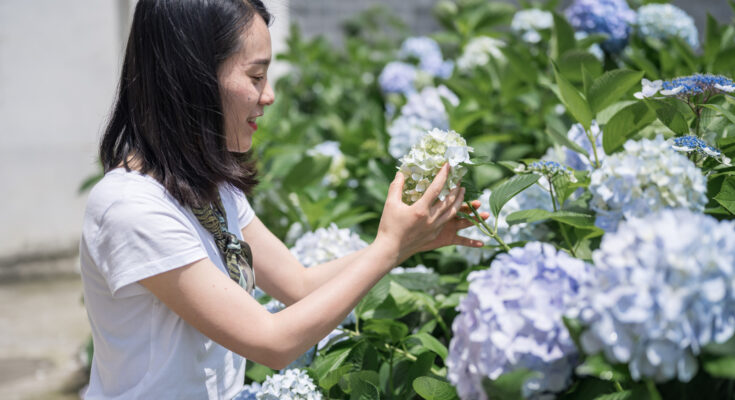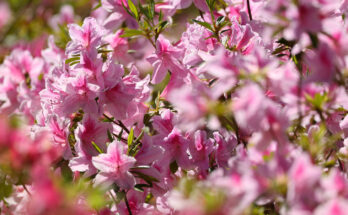The Big Hydrangea Myth People Need To Stop Believing
Hydrangea’s huge blooms create an outsized impact in your garden. Although it’s easy to grow and take care of hydrangeas, there’s one persistent myth that could be making it harder for these gorgeous shrubs to thrive. Hydrangeas are frequently touted as shade-loving plants, but that’s only partially true. This myth about growing hydrangeas has its origins in the fact that they are woodland plants, so they need some shade. However, if you try to grow hydrangeas, particularly bigleaf varieties, in full shade, you’ll end up with a beautiful green bush but few or no flowers.
However, don’t swing to the opposite side and plant your hydrangeas in full sun. This can cause crispy, brown flowers and sunburned foliage. Hydrangeas are Goldilocks when it comes to shade — they need it to be just right. Morning sun and afternoon shade is usually the best combination. Even hydrangeas that are labeled to grow in full sun will need some shade. Of course, the ideal conditions will vary based on the hydrangea variety you’re growing and your climate. Read your plant’s care label and consult your local extension service for more guidance.
How to give your hydrangeas the right amount of light
If you weren’t aware of these common hydrangea issues and you’ve got your heart set on a location for your plant that isn’t the preferred “morning sun/afternoon shade” combo, you still may be able to make it work. However, it will take some extra time and effort on your part. For hydrangeas that are getting too much shade, you can trim back any plants that are blocking the sun. If there’s no way to give your hydrangea more access to light, you’re probably better off transplanting it. You can also try a variety such as ‘Bigleaf Hydrangea’ (Hydrangea macrophylla) if you really can’t imagine that deep shady spot with any other type of plant.
Hydrangeas that are getting too much sun will need lots of water to offset the damage. Their blooms scorch and wilt because the moisture evaporates from their tissues. Watering your plants in the morning and evening on particularly hot days can help prevent this. But you’ll get the best results if you plant some larger, sun-blocking plants nearby to provide more permanent shade. As a temporary measure, in the event of an unusually scorching heat wave, you can even put up a tent or umbrellas to shade your hydrangeas.



